The holy leap of faith at the Mahakumbh
650 million people bathed in water polluted with sewage
The grand Maha Kumbh spectacle has come to an end in Allahabad (Prayagraj) and on social media. An estimated 650 million people—half of India’s population, or a third? We don't know because there hasn’t been a Census since 2011—took a dip at Sangam, where three holy rivers, the Ganga, Yamuna, and the mythical Saraswati, meet.
Bollywood stars, politicians, billionaires and influencers also dutifully made their way to the Kumbh for a well-documented holy dip.
If, for some reason, you didn't find it within yourself to make the trip to Allahabad, your devotion could still take a virtual plunge. For Rs 500, a photocopy of your photo could take the dip on your behalf and “cleanse the soul.”
You can even buy “maha kumbh water” from Amazon, Flipkart or Blinkit.
There were several good reasons why you might have chosen not to attend physically. One was the enormous crowds coupled with poor governance, lack of planning, and mismanagement, which led to the deaths of at least 100 people in three separate stampedes.
Another reason was the water quality itself. Several people developed severe infections after taking the dip. Outbreaks of the rare neurological disorder Guillain-Barré Syndrome (GBS) have been linked to large-scale exposure to water contaminated with faecal matter. At least nine people have died in Pune alone due to GBS, with at least 14 deaths recorded across India.
There was plenty of faecal matter in the waters at the Maha kumbh, according to the Central Pollution Control Board (CPCB). The CPCB is not, as far as we know, funded by George Soros. It is a central government body under the Ministry for Environment, Forests and Climate Change headed by Bhupendra Yadav, BJP member of parliament from Alwar.
In February, the CPCB filed a report with the National Green Tribunal which was hearing a matter on the quality of water in the river Ganga. It said that water quality was not found to be fit for bathing during monitoring carried out in January.
The water was unsuitable for drinking or bathing because it exceeded two key thresholds:
Biological Oxygen Demand (BOD): BOD measures the oxygen required to break down organic waste in water. Higher BOD indicates more organic pollution. For water to be considered safe for bathing, BOD should be below 3 milligrams per liter. At Sangam, BOD levels reached as high as 5.29 milligrams per liter in February.
Faecal Coliform Bacteria: These bacteria originate from human and animal faeces. According to CPCB standards, drinking water should have no more than 50 most probable number (MPN) per 100 ml, while bathing water should not exceed 500 MPN per 100 ml. On January 20, the Ganga near Sangam recorded an MPN of 49,000 per 100 ml—nearly 100 times the safe limit for bathing.
The situation improved dramatically on January 24 as more water was released into the river upstream. But the faecal coliform levels were still 26 times the safe limit.
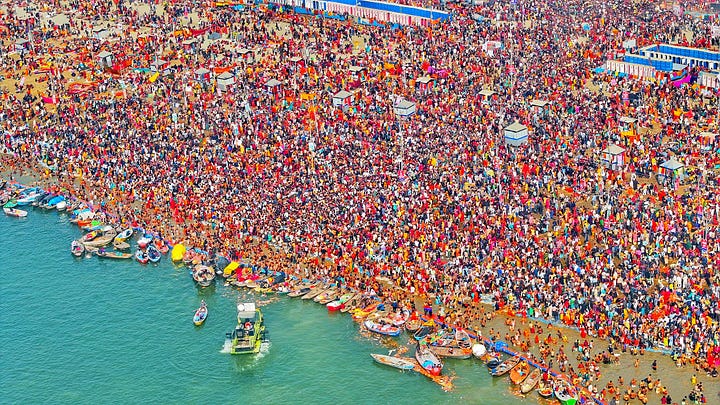
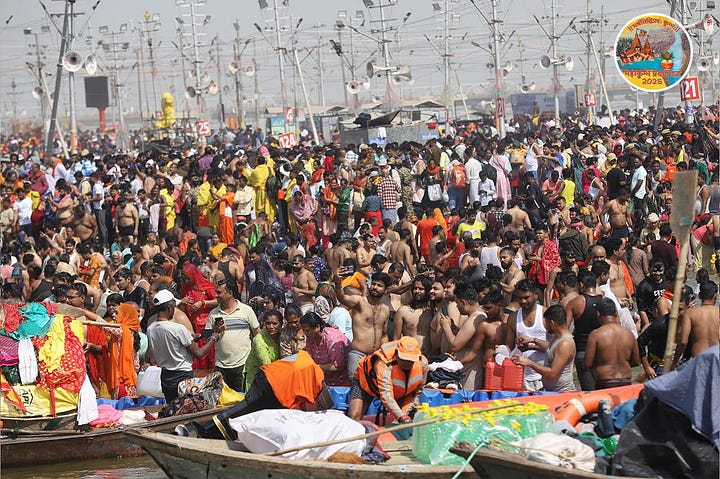
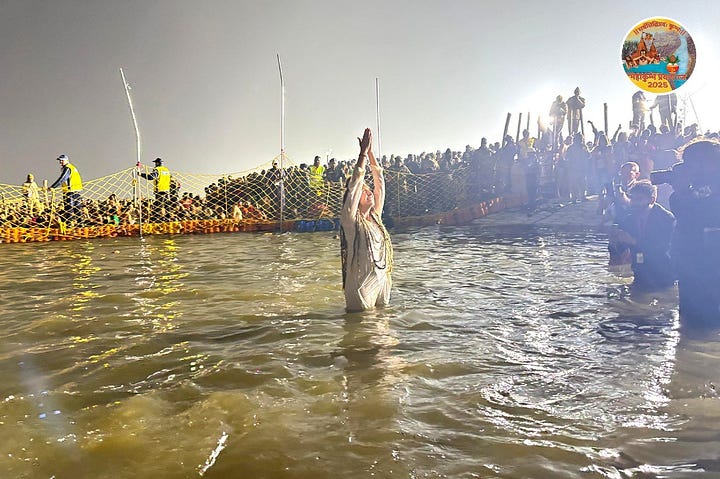

The NGT bench was, as one would expect, not particularly impressed by the numbers. “You have made 500 million people bathe in polluted sewage water, water that was not fit for bathing, and people had to drink that water,” it said.
Why is the Ganga not clean?
The Ganga basin is one of the most densely populated regions in the world, home to over 600 million people. The river passes through 100 cities with populations exceeding 100,000. So, the flow of pollutants into the river is enormous.
The primary sources of pollution, according to the National Mission for Clean Ganga (NMCG), include industrial waste, agricultural runoff, human corpses, animal carcasses, open defecation, and untreated sewage.
Every day, 249 million litres of industrial effluents and 12,000 million litres of sewage flow into the Ganga, as per government data.
Efforts to clean the river have been ongoing for over a century. The Ganga Mahasabha, founded by Madan Mohan Malviya in 1905, has long advocated for an uninterrupted flow of the river to ensure clean water.
In 1985, Prime Minister Rajiv Gandhi launched the Ganga Action Plan to focus on sewage treatment and reducing industrial pollution.
In 2014, after insisting that he had been summoned to contest elections from Varanasi by “mother Ganga” herself, Narendra Modi launched the National Mission to Clean Ganga not only to clean but also to rejuvenate the river.
However, as CPCB data shows, ten years and nearly Rs 40,000 crore later, the program has failed to meet its objectives.
Why has the Clean Ganga mission failed?
One major issue has been persistent underutilisation of funds. PRS Legislative Research found that funds allocated for the Clean Ganga mission have been underutilised in eight of the last ten years. By 2024-25, 31% of allocated funds remained unused.
This underutilisation has severely impacted infrastructure development. Most sewage treatment plants (STPs), meant to treat the 12,000 million liters of sewage before it reaches the river, have not been built.
After a decade of the NMCG, treatment capacity stands at just 4,000 million liters—only a third of the sewage generated, according to the NMCG website.
Even where STPs exist, they often fail to function effectively. In Bihar, for example, STPs are treating sewage at just 31% of their capacity.
Then there is the issue of the NMCG having abandoned one of its key objectives. The rejuvenation of the Ganga was supposed to be built around two pillars - nirmal dhaara (unpolluted flow) and aviral dhaara (continuous flow).
However, 80% of NMCG funds are now spent on large STPs, which—while essential for pollution control—do not ensure continuous water flow.
Maintaining a natural flow is critical, as it prevents stagnation, dilutes pollutants, and supports the river’s self-cleansing ability.
Ensuring a free-flowing Ganga was the primary goal of the Ganga Mahasabha since its founding in 1905. In 2018, environmentalist GD Agarwal, a former IIT Kanpur professor and patron of the Mahasabha, died after a 112-day hunger strike demanding a free-flowing Ganga.
Finally, sanitation remains a significant challenge, particularly in rural India, where open defecation persists. Despite substantial progress, one in four rural households still lacks access to toilets, according to the National Family Health Survey. Although Prime Minister Modi declared India open defecation free in 2019, the reality is far from it.
In other news
This is how Raily Protection Force personnel celebrated the end of their duties at the mahakumbh.






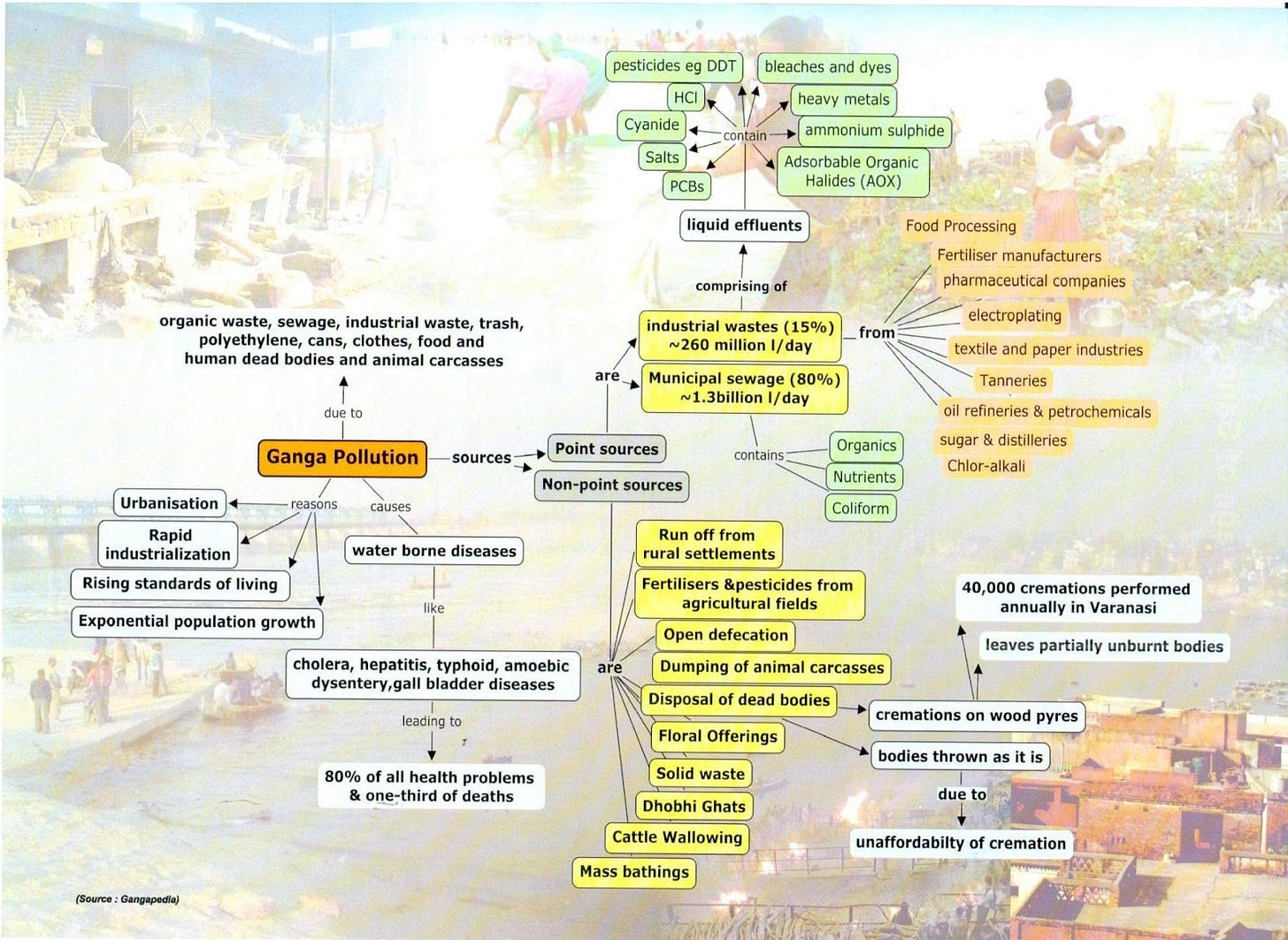
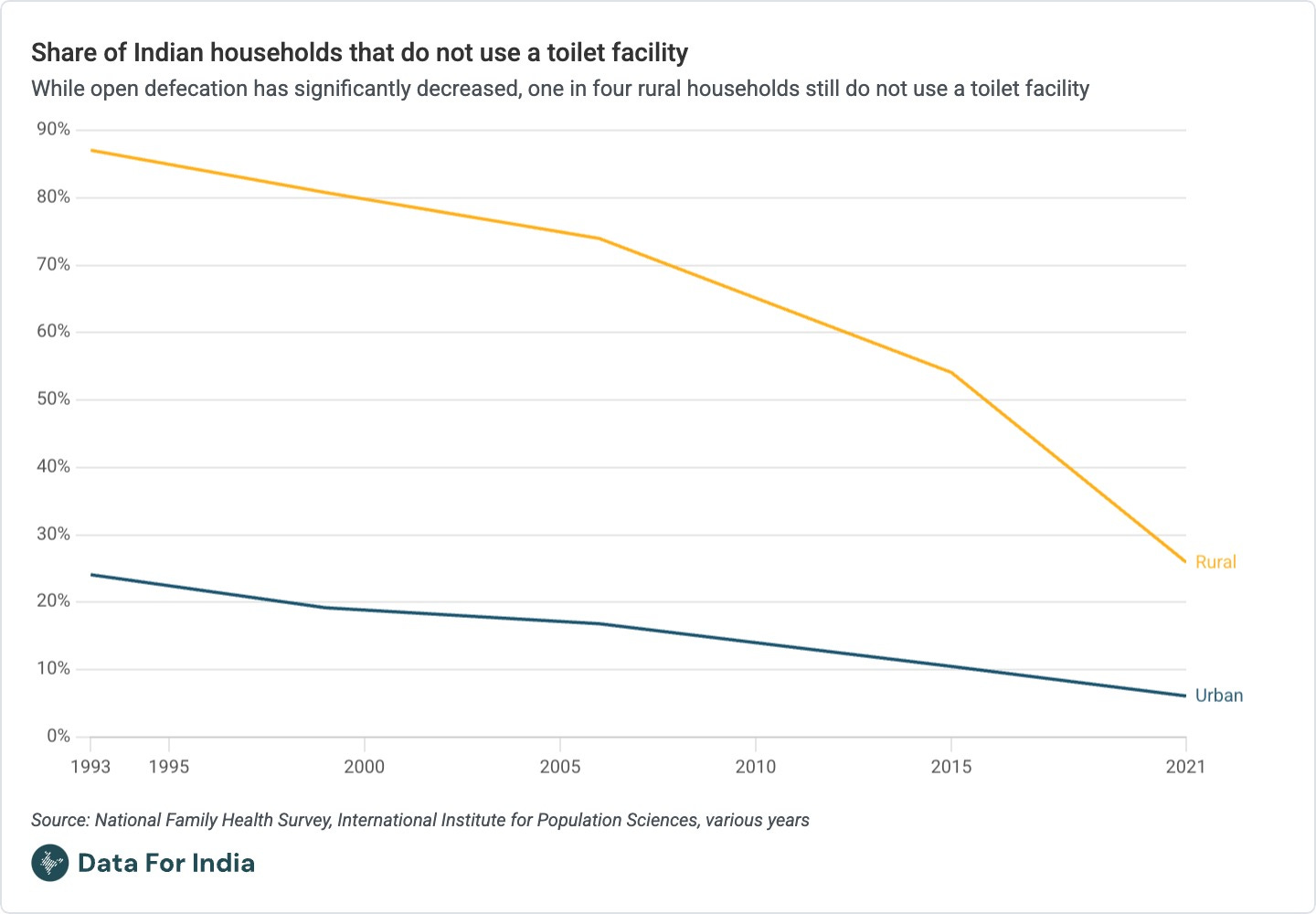
Very well expressed. Spiritual tourism is being used to fool the already stupid people. Blinded by faith and ignorance. I have actually bought the sangam water from Blinkit !!!!!!